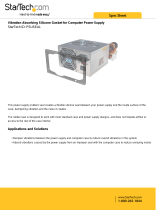Maico MC 501 is a high-performance competition motorcycle designed for off-road use in difficult terrain or on a motocross race track. With a powerful 501cc engine, radial cooling fins for better cooling, and a lightweight frame made of chrome-moly tubing, it's built for speed and agility. The 4-speed dog shifting transmission and hydraulic dampened telescopic forks ensure precise handling and control, while the large volume foam air filter and fiberglass air cleaner box protect the engine from dirt and debris.
Maico MC 501 is a high-performance competition motorcycle designed for off-road use in difficult terrain or on a motocross race track. With a powerful 501cc engine, radial cooling fins for better cooling, and a lightweight frame made of chrome-moly tubing, it's built for speed and agility. The 4-speed dog shifting transmission and hydraulic dampened telescopic forks ensure precise handling and control, while the large volume foam air filter and fiberglass air cleaner box protect the engine from dirt and debris.




















-
 1
1
-
 2
2
-
 3
3
-
 4
4
-
 5
5
-
 6
6
-
 7
7
-
 8
8
-
 9
9
-
 10
10
-
 11
11
-
 12
12
-
 13
13
-
 14
14
-
 15
15
-
 16
16
-
 17
17
-
 18
18
-
 19
19
-
 20
20
-
 21
21
-
 22
22
-
 23
23
-
 24
24
-
 25
25
-
 26
26
-
 27
27
-
 28
28
-
 29
29
-
 30
30
-
 31
31
-
 32
32
-
 33
33
Maico MC 501 Instruction Book And Service Manual
- Type
- Instruction Book And Service Manual
Maico MC 501 is a high-performance competition motorcycle designed for off-road use in difficult terrain or on a motocross race track. With a powerful 501cc engine, radial cooling fins for better cooling, and a lightweight frame made of chrome-moly tubing, it's built for speed and agility. The 4-speed dog shifting transmission and hydraulic dampened telescopic forks ensure precise handling and control, while the large volume foam air filter and fiberglass air cleaner box protect the engine from dirt and debris.
Ask a question and I''ll find the answer in the document
Finding information in a document is now easier with AI
Related papers
-
Maico MC 400 Instruction book
-
Maico SQUARE BARREL User manual
-
Maico GM STAR 500 E 1986 Owner's manual
-
Maico MA 28 Operation Manuals
-
Maico PILOT TEST Operating instructions
-
Maico MA 42 Operating instructions
-
Maico MA 1 Operating Instructions Manual
-
Maico easyTymp Operating instructions
-
Maico MI 34 Operating instructions
-
Maico ER 60 GVZ Product information
Other documents
-
KMC KMC080 Operating instructions
-
UNDISCLOSED RED1RC Operating instructions
-
RC4WD Tough Armor Side Steel Sliders User manual
-
BENDIX TCH-003-016 User manual
-
Kawasaki JT1500A2 User manual
-
Sunstone A-DH1724-L Installation guide
-
BENDIX TCH-001-021 User manual
-
BENDIX TCH-001-038 User manual
-
BENDIX TCH-001-013 User manual
-
 StarTech.com PSUSEAL Datasheet
StarTech.com PSUSEAL Datasheet

































